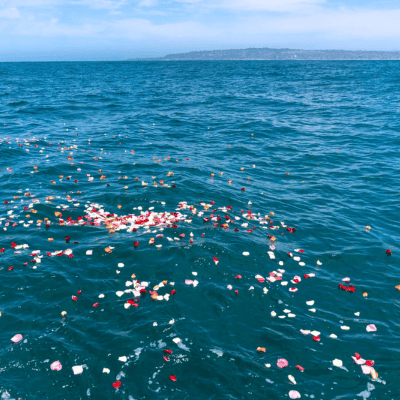Cremation may not be the traditional choice for many families. Still, it has been widely accepted and is, by far, the most common method of disposition in many states. California, according to the Cremation Association of North America, now has a rate is over 60%, and cremation is increasing in demand. This article has some exciting cremation facts.
Although many religions have historically opposed cremation, they increasingly accept this practice. For example, the Roman Catholic Church allows its members to select cremation. It believes that souls do not depend on physical bodies for existence and will continue after they have dispersed. Furthermore, the Vatican recently published more lenient guidelines about cremation than before.
There are some unique things about cremation to remember if you are considering cremation for yourself or another.
Cremation in Cardboard Caskets – Almost everyone does it
Most basic cremation packages offer an alternative casket made of cardboard which the deceased can be placed inside before being cremated in a retort.
This economical solution may appeal to families looking for less costly casket options and those planning a viewing or funeral service.
Cremation containers designed to meet state requirements for alternative containers are budget-friendly and offer an alternative solution for funeral directors and crematoriums. These alternatives resemble traditional casket frames with handles for lifting. These cremation containers are made from corrugated fiberboard and feature double walls – depending on style. They may even feature interior liners and rope handles for increased durability. They are specifically tailored for funeral directors, burial sites, or crematoriums, with additional support trays for strength and stability. Budget cremation caskets come equipped with plywood support trays that can be inserted inside for added strength and stability. These may be required by funeral directors, burial sites, or crematoriums – budget cremation solutions!
Many are surprised to learn that cardboard caskets can be decorated like wood or wicker, allowing families to write messages to their loved ones.
The Reverence of Post-Cremation Bone Processing
Cremation has grown increasingly popular over time as burial plots become scarcer and more expensive and are easier on the environment than burial. Unfortunately, while cremation may seem like the obvious choice when choosing this path to burial, not everyone fully understands what takes place when opting for this alternative option.
Ashes of cremated remains are frequently referred to as “ashes,” though the term amalgamates two words: cremated and remains. Ashes refer to any remains after all organic material has been burned off in a cremation chamber. In most cases, many fragments of bone must be processed (ground to a finer powder); before they are given to the family.
This intricate procedure involves using a specialized machine, designed with great care and respect, delicately grind the skeletal remains into a fine, graceful powder. This finely ground substance, often referred to as “ashes” or “cremated remains,” carries the essence of the individual, embodying their life’s journey.
Cremation Jewelry – The Cremation Fact of Bling
Many people choose cremation jewelry to keep their ashes close after someone dies, with locket-style necklaces being trendy. Cremation lockets contain small compartments designed to hold cremains. Engravable lockets come in various shapes, sizes, and materials available – with their popularity rising among younger generations as an expression of memory for loved ones lost.
Rings are another popular form of cremation jewelry. These rings typically feature an opening at either the side or back for placing ashes inside, and some models feature gemstones to symbolize them further. Other cremation jewelry options, such as pendants, bracelets, or small memorial urns, may be more discreet. They can fit seamlessly with any outfit and are often more appropriate to memorialize loved ones who have passed on.
Scattering at Sea is Increasing in Popularity – cremation fact of Ocean
In San Diego, mainly because of our proximity to the ocean, Scattering at sea has become an increasingly popular and emotional way to say goodbye to loved ones. This touching and calm ceremony releases cremated remains into the ocean, representing a seamless return to nature’s embrace. The waves and ocean are calming, and the whole experience of every healing for all on board. With its inherent beauty and ecologically conscientious character, scattering at sea provides family and friends with peace of mind. Their loved one will forever be a part of the beautiful waters they loved.
We perform hundreds of scatting each year, and each is different and holds special significate for the family.
The Cremation Process and Its Environmental Considerations
The amount of CO2 produced by a typical cremation can vary depending on several factors, such as the size of the individual, the casket, and the efficiency of the cremation equipment. The production of CO2 during the cremation process comes from two main sources. One, the actual cremation of the body, and two, the burning of fossil fuels to operate the cremation equipment. See our post on Modern Cremation Chambers for details on environmental considerations.
CO2 from the body: During cremation, the body’s organic matter, including carbon-based compounds, undergoes combustion, releasing CO2 into the atmosphere. A typical cremation can release approximately 550 to 880 pounds of CO2.
CO2 from fossil fuels: The cremation process requires significant heat to reach the high temperatures necessary for complete combustion. Traditional cremation ovens use natural gas, propane, or other fossil fuels to generate this heat. The combustion of these fossil fuels also produces additional CO2 emissions.
Unveiling 5 Captivating Facets of Cremation – Conclusion
Much has changed in the funeral industry over the past few years, and probably, even more will change. The age-old funerals and burials practice has significantly changed as society has moved more to ward cremation. The use of simple cardboard containers for cremation, the process of grinding bones into fine ashes, the popularity of cremation jewelry, the rise of sea scattering ceremonies, and environmental concerns are some intriguing cremation facts that have emerged over time.




